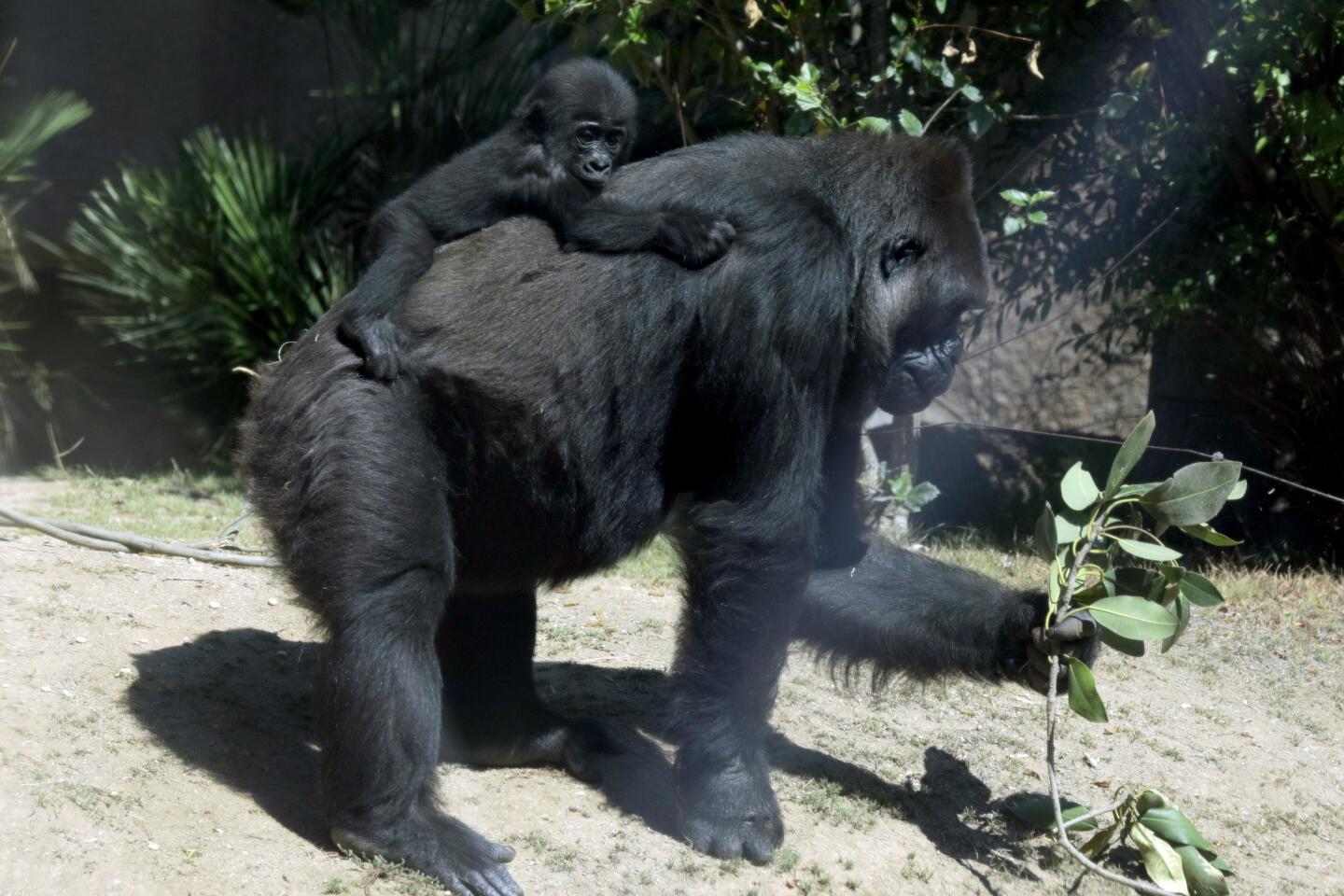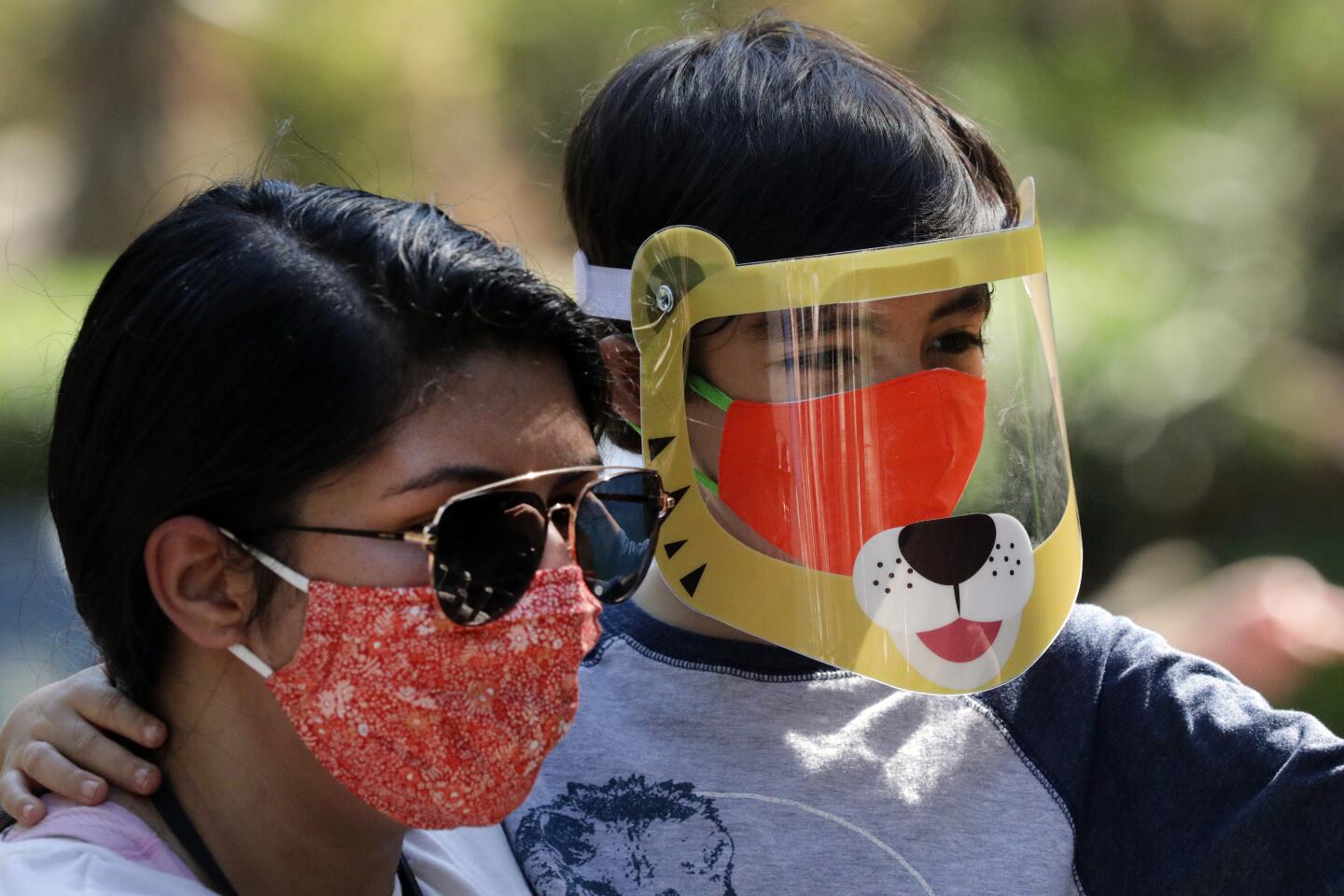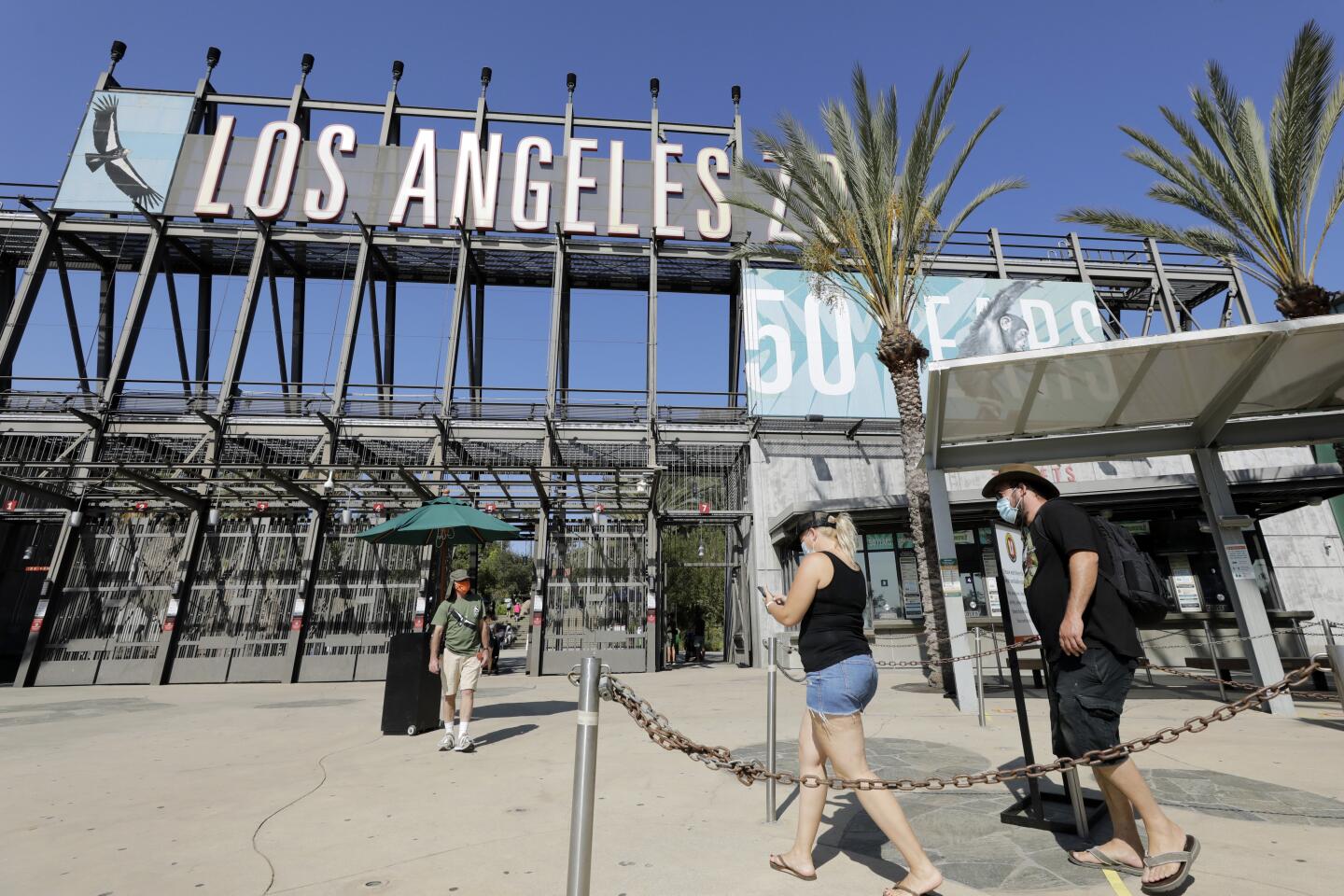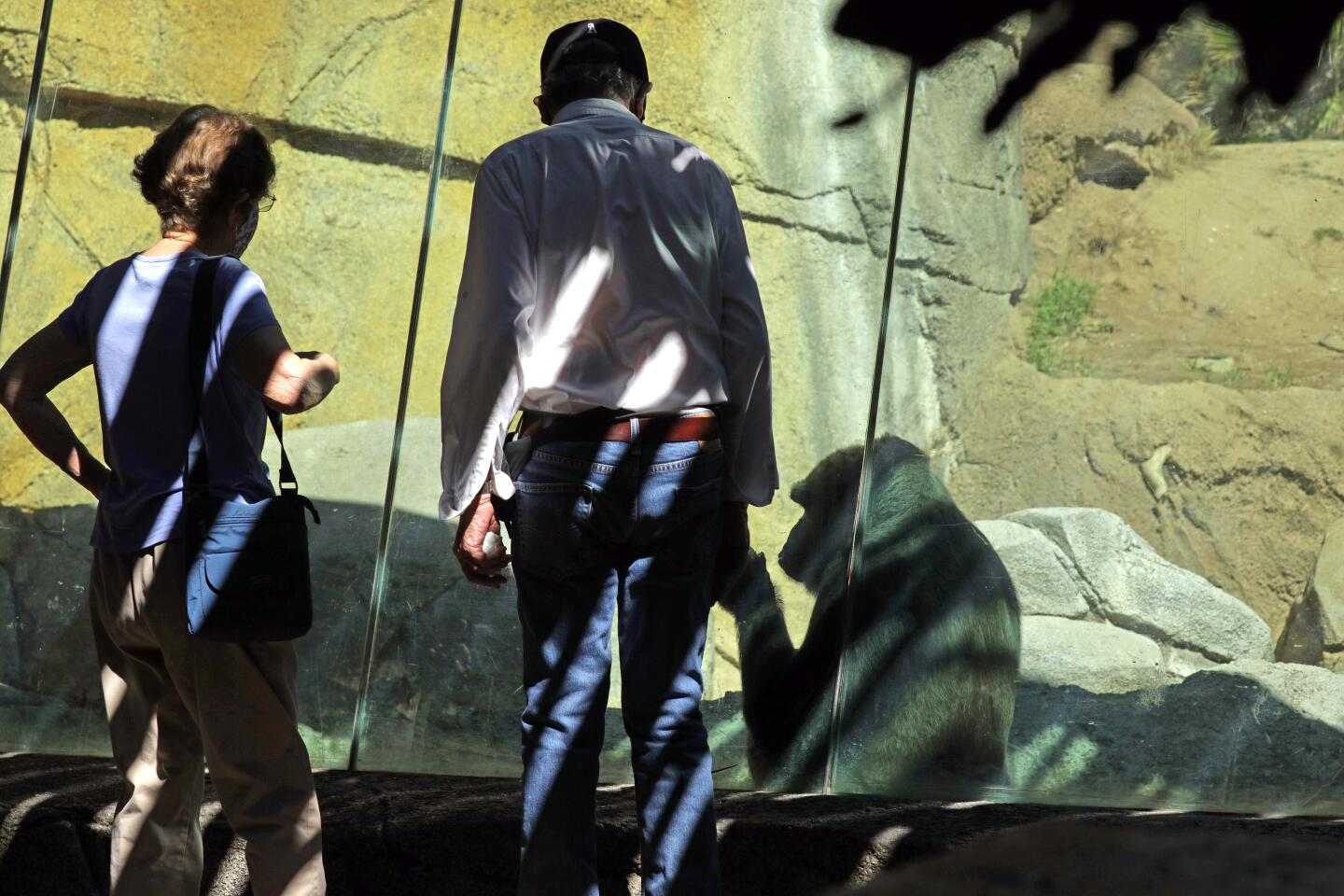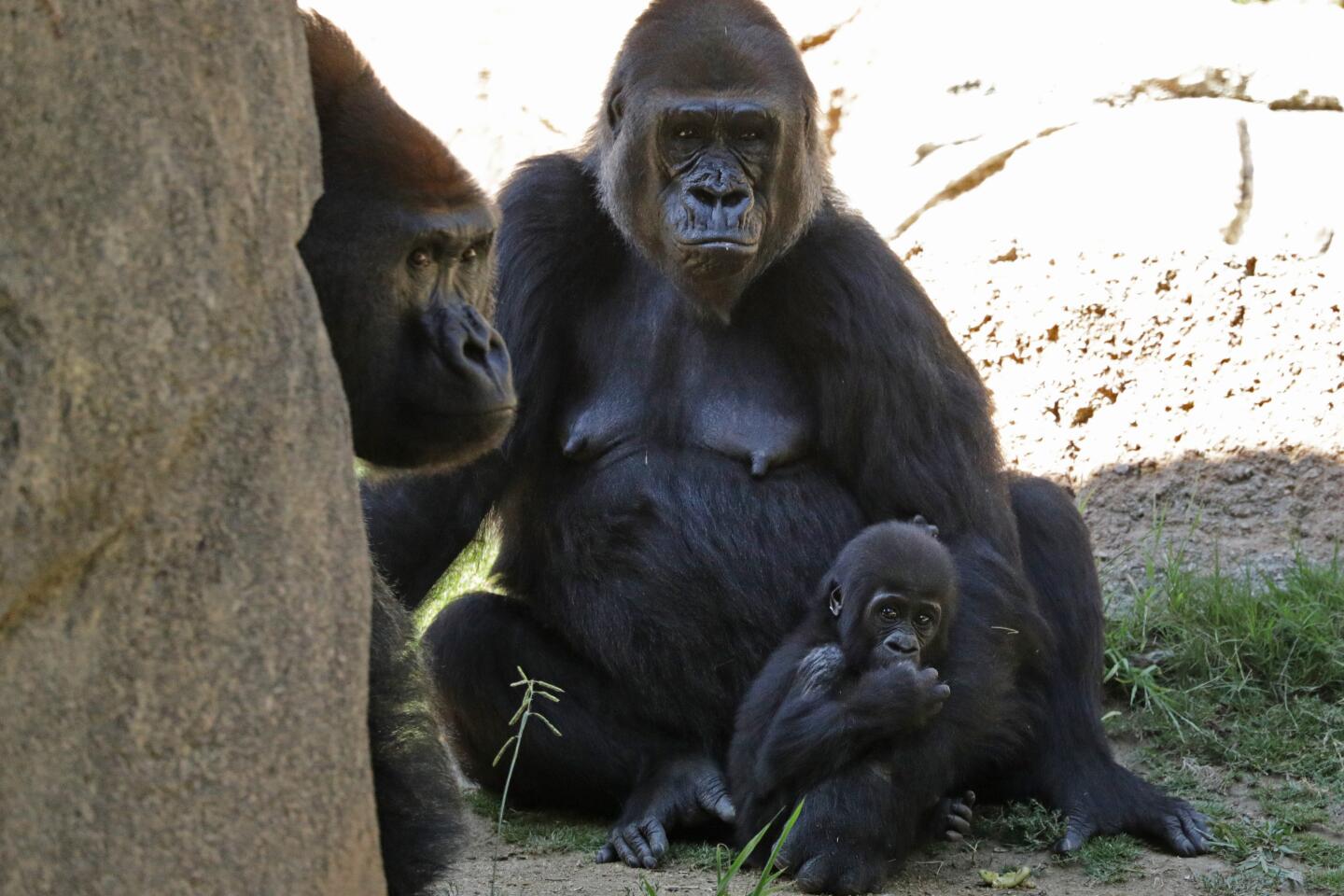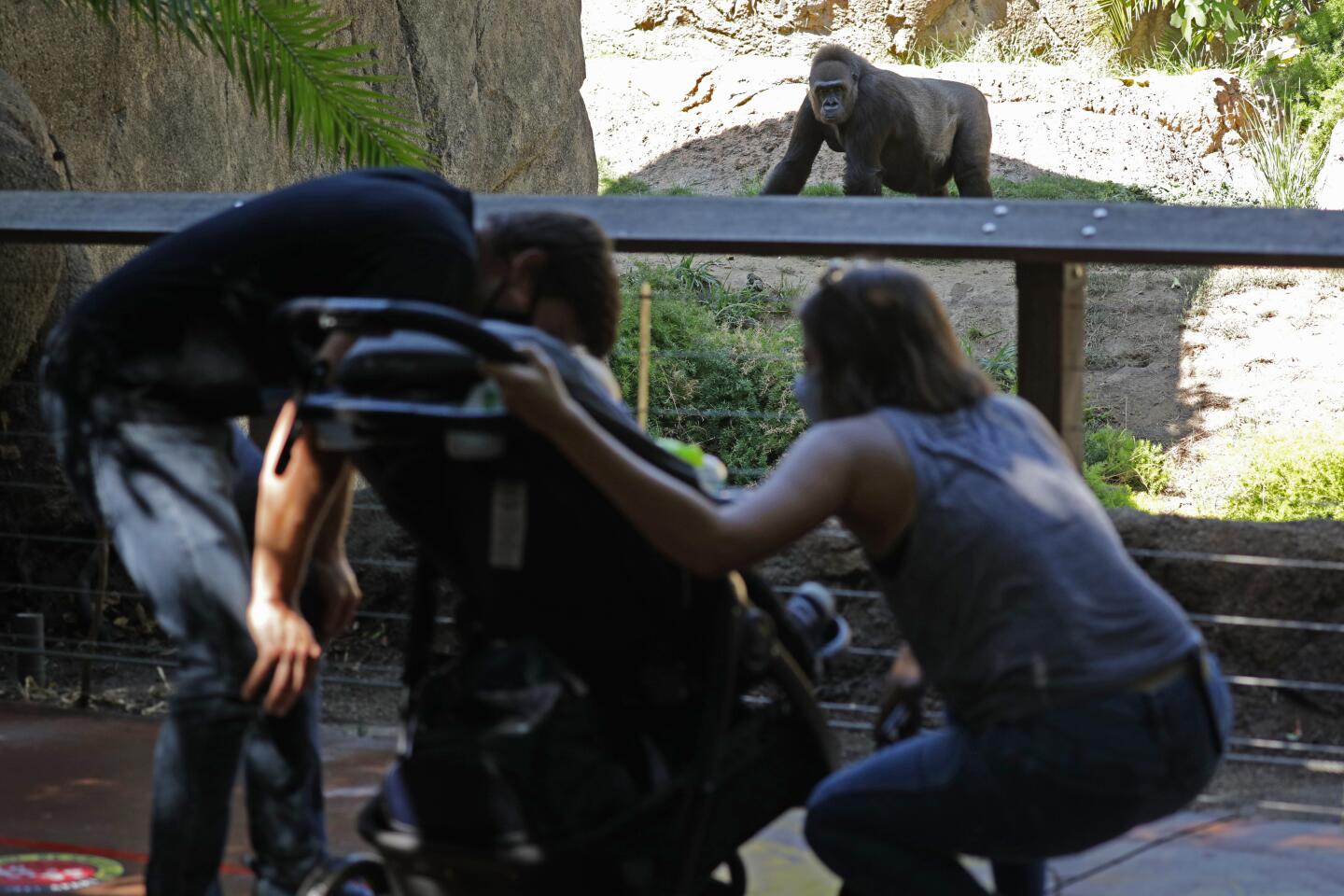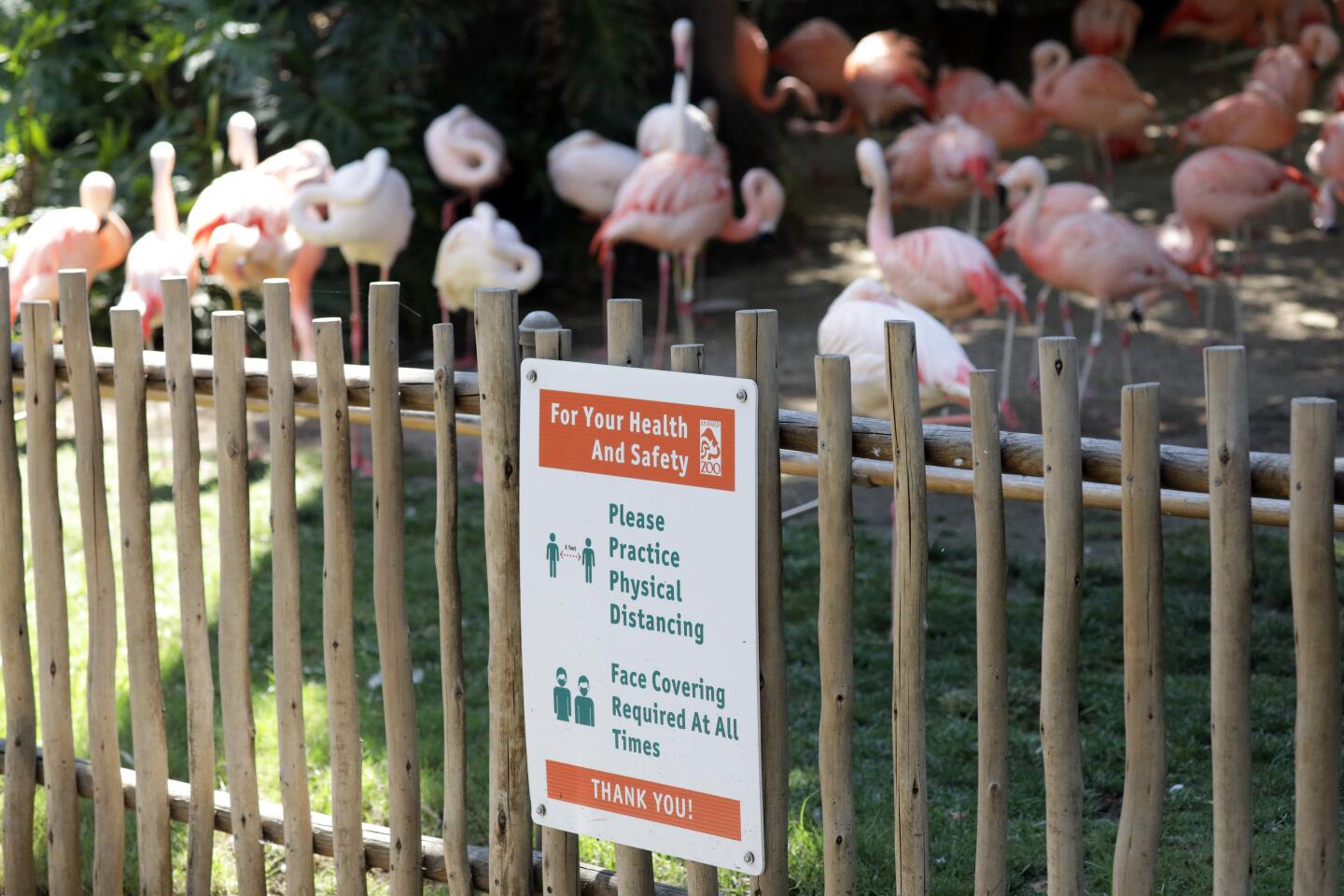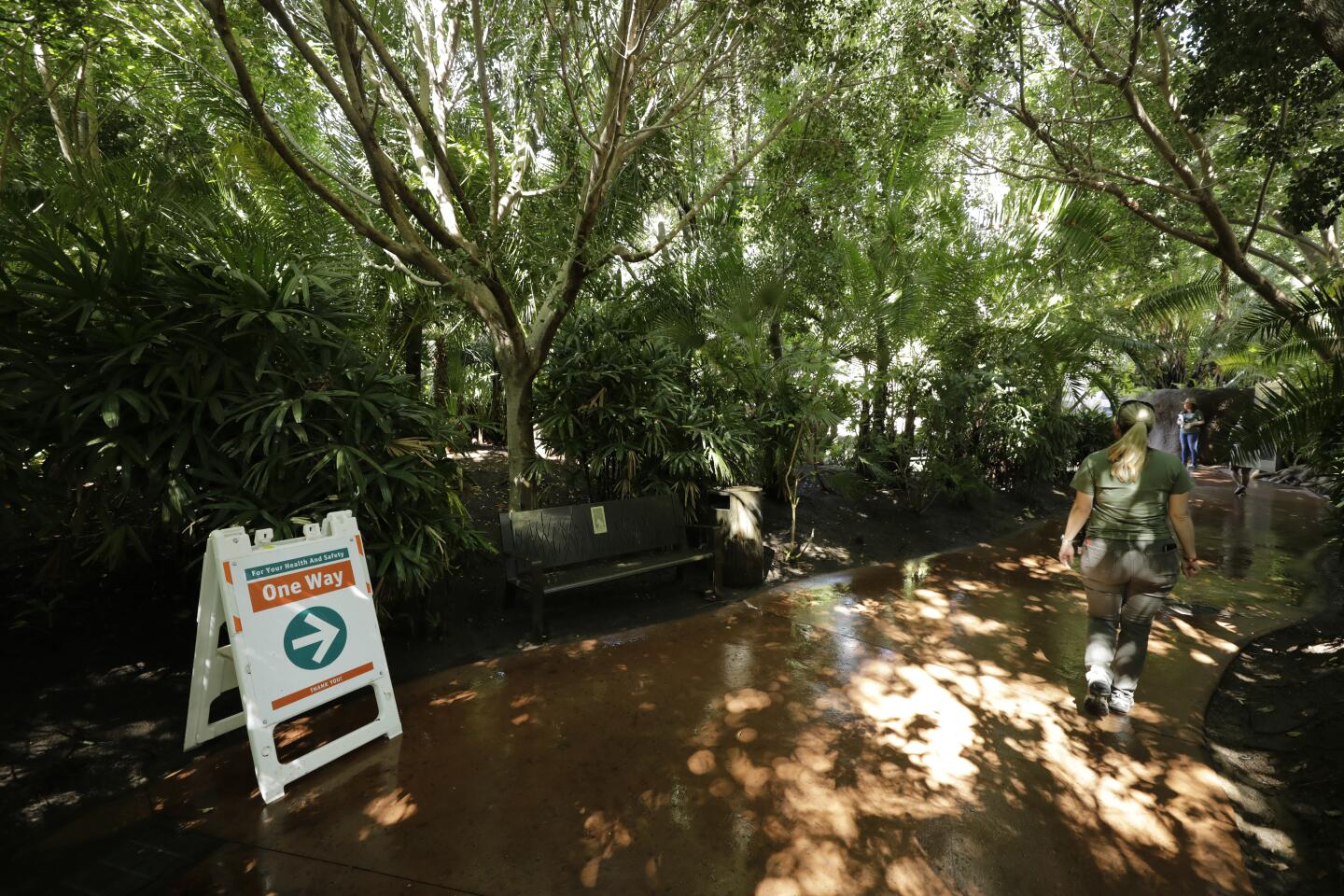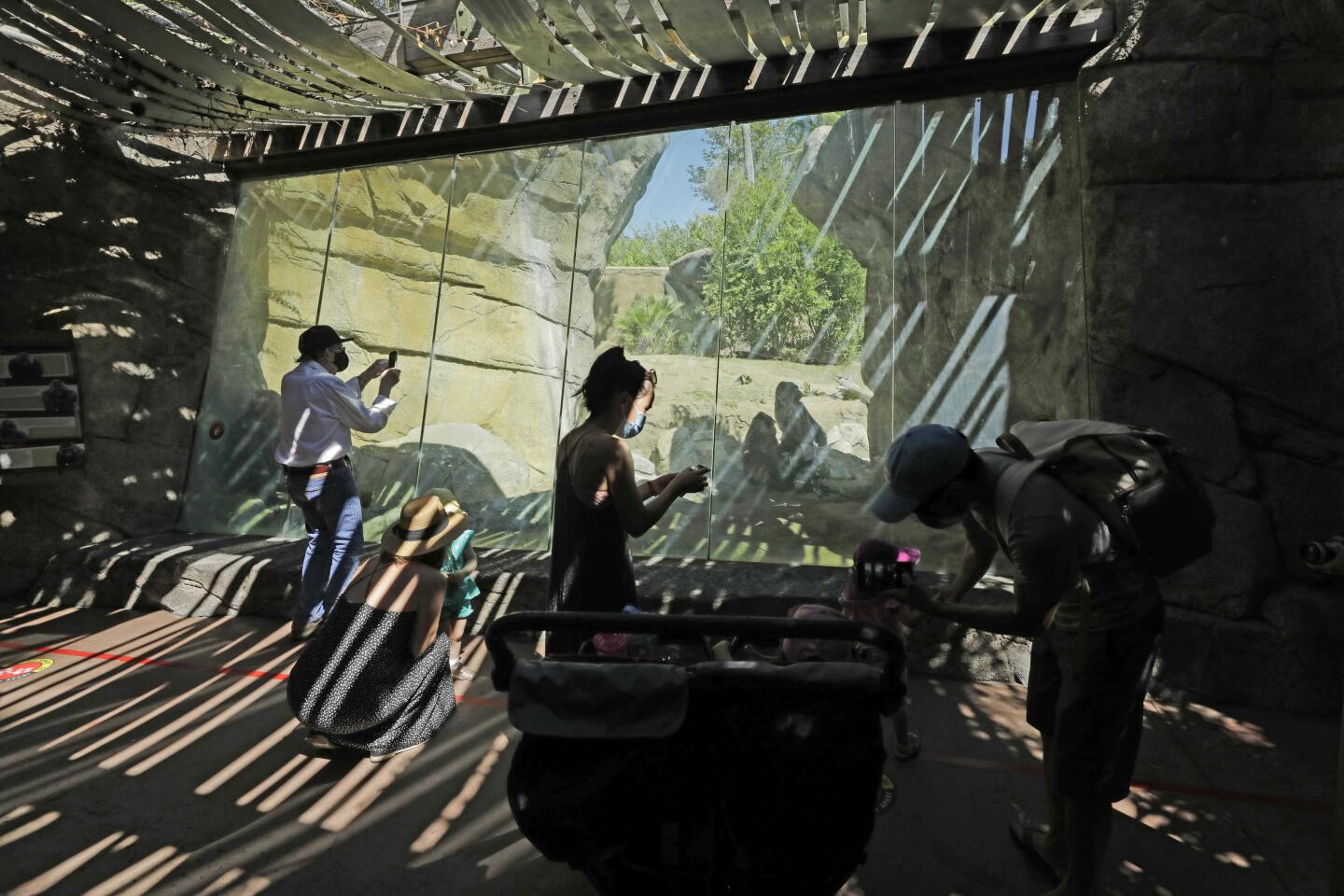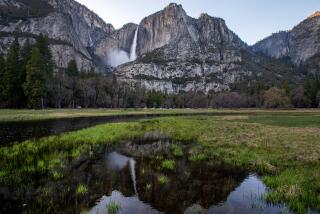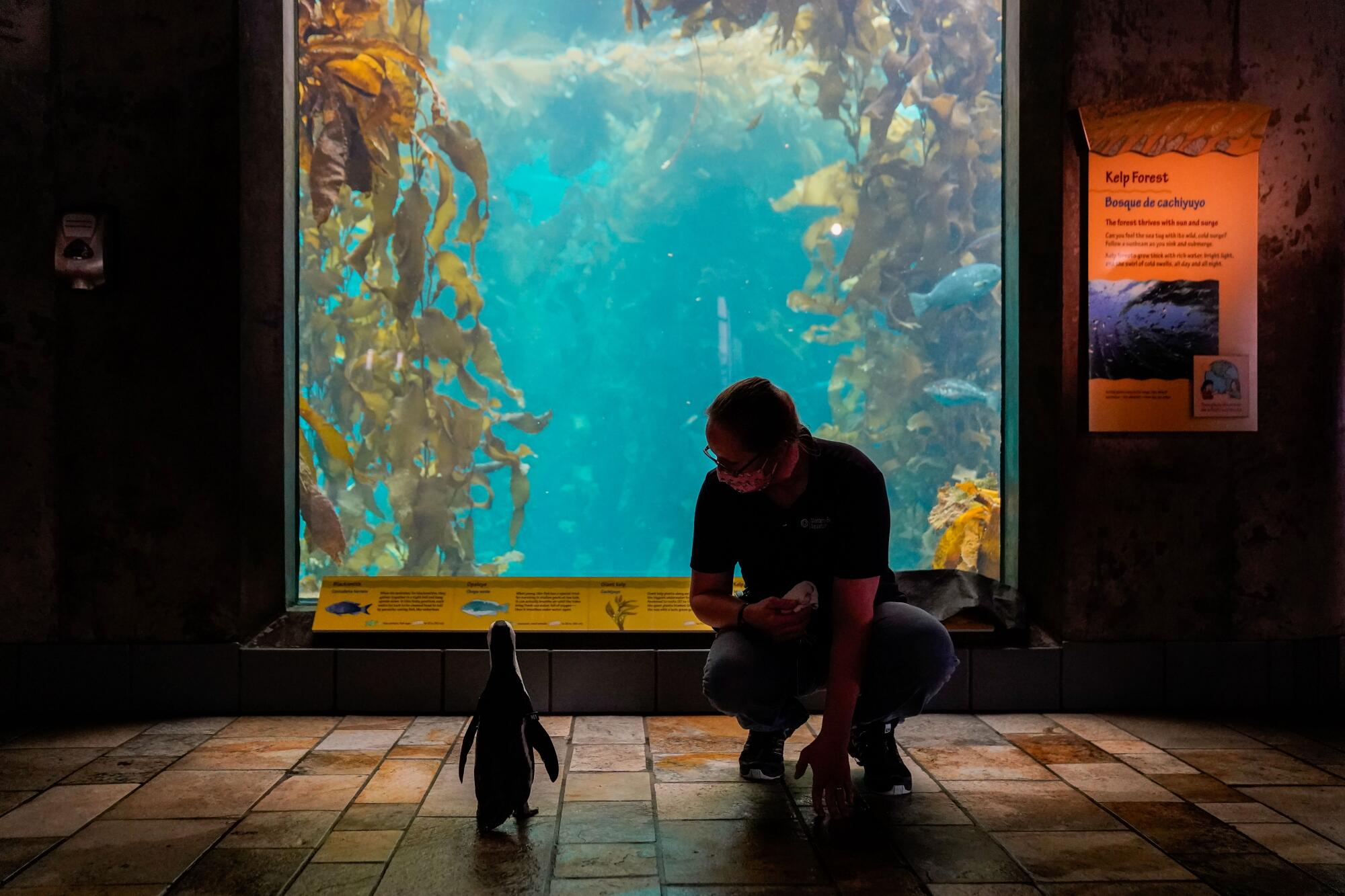
- Share via
MONTEREY, Calif. — A solitary African penguin waddled through an empty foyer at the famed Monterey Bay Aquarium, peeking curiously under an unoccupied bench.
As a glittery school of silver sardines glided through the 1-million-gallon Open Sea exhibit, soft atmospheric music played to an empty viewing room. No families were there to watch the sharks get fed. The jellyfish shimmered alone in the dark.
Crowds would normally be filling the aquarium corridors in these waning days of summer. But the aquarium on Cannery Row has been closed to the public for five months now because of the COVID-19 pandemic. Inside, it is quiet.
As he examined a sedated sea otter pup rescued from the kelp beds off Santa Cruz, Dr. Michael Murray, the aquarium’s director of veterinary services, wondered aloud if the animals noticed how much things had changed.
“Part of me says, ‘Oh, they don’t really care,’” he said. “The other part says, ‘These are not dumb animals. They’re very aware of their surroundings. They can see people through the acrylic. They can react to people. So why wouldn’t they notice?’”
Life above the water has been fraught.
The aquarium missed its entire summer tourism season, and its finances are in such dire straits that more than a third of its staff has been laid off or furloughed.
“The visitors are gone. The revenue is gone,” said Julie Packard, the aquarium’s executive director. “Meantime, the animals and exhibits are doing great.”
Outside, three wildfires have been burning in Monterey County, causing at least one staff member to lose a home and others to evacuate. Animals sensitive to smoke and ash falling from the orange-tinged sky had to be pulled indoors.
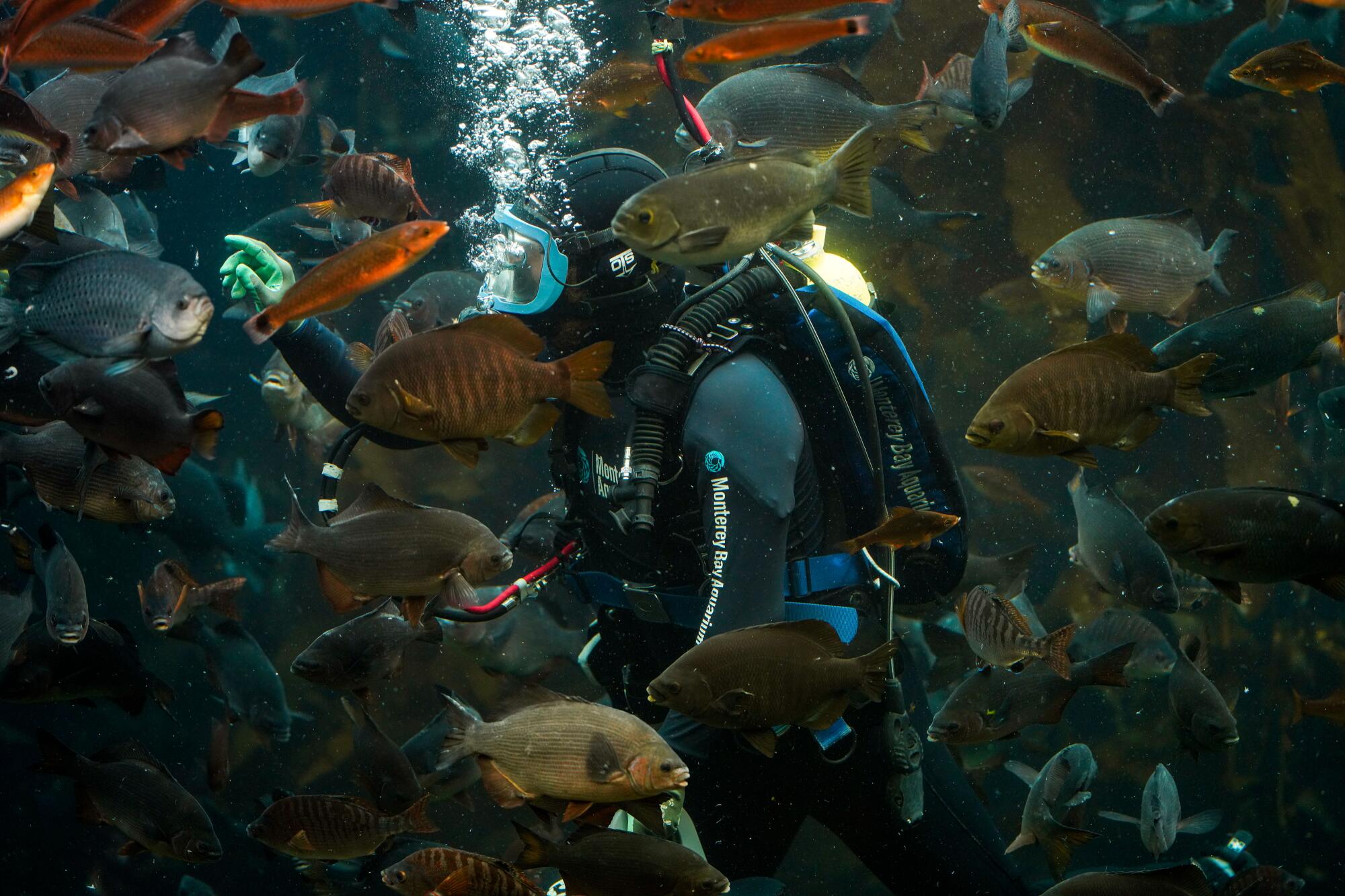
The sea otters are susceptible to the coronavirus, forcing staffers to wear masks and gloves around them — and to try to maintain a good distance from the social mammals, who now perk up when they see the few humans there are walking past their exhibit.
“It’s been frightening; it’s been concerning, disconcerting,” said Jon Hoech, the vice president of animal care, who was evacuated from his home near Salinas because of the River fire. “We’ve had to navigate PPE [personal protective equipment], social distancing, doing split shifts … but the real difficulty for the staff is not having people see the work they’re so passionate about.”
When it opened in 1984, the aquarium — built in the former Hovden sardine cannery — helped revitalize gritty Cannery Row. The waterfront stretch is now a tourist destination filled with family-friendly restaurants and tributes to John Steinbeck, who, in his novel named after the place, described Cannery Row as “a poem, a stink, a grating noise, a quality of light, a tone, a habit, a nostalgia, a dream.”
“The Monterey Bay Aquarium is world famous, and it’s like a global beacon for us for travelers,” said Rob O’Keefe, chief executive of the Monterey County Convention & Visitors Bureau. “What they’re doing directly impacts tourism for us.”
The aquarium shut down March 13. A grand reopening was planned for July 9, but it was scrapped a few days before because Monterey County had just been placed on the state’s coronavirus watchlist. No opening date is currently planned.
“The visitors are gone. The revenue is gone. Meantime, the animals and exhibits are doing great.”
— Julie Packard, executive director of the Monterey Bay Aquarium
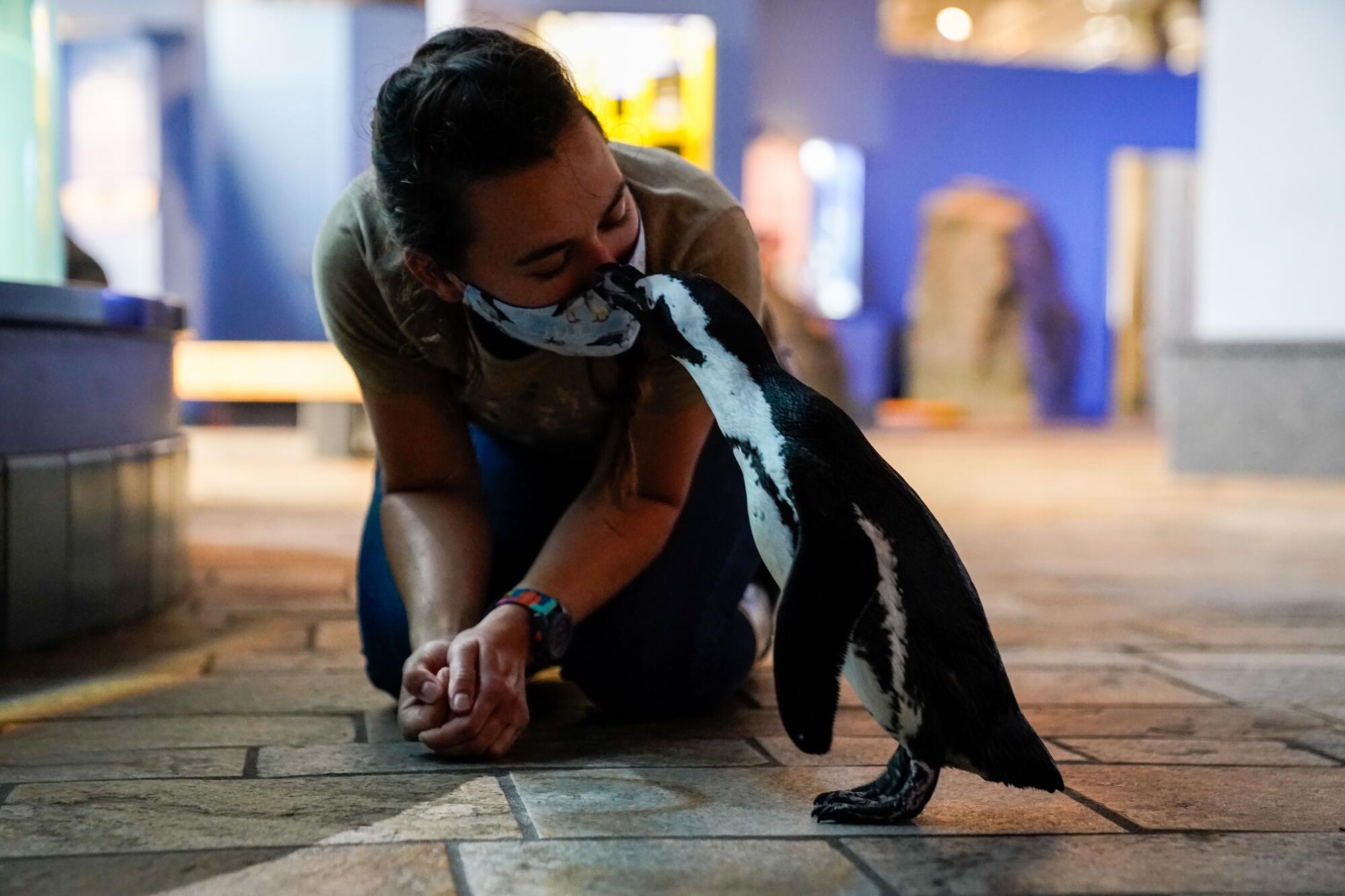
Faced with a projected loss this year of some $45 million, the aquarium laid off or furloughed 220 of its 580 employees. Others had their pay cut through the end of the year.
Because the nonprofit had more than 500 employees, it did not qualify for a forgivable coronavirus aid loan through the federal Paycheck Protection Program, Packard said.
It has been pleading with donors to give more and scaled back conservation programs. It cut 70% of the budget for its conservation and science department, which, among other things, works to reduce plastic pollution in the ocean and combat the negative effects of climate change.
The aquarium has kept a limited staff on-site to care for the more than 81,000 animals and maintain the complex system that pumps in some 2,000 gallons of seawater per minute.
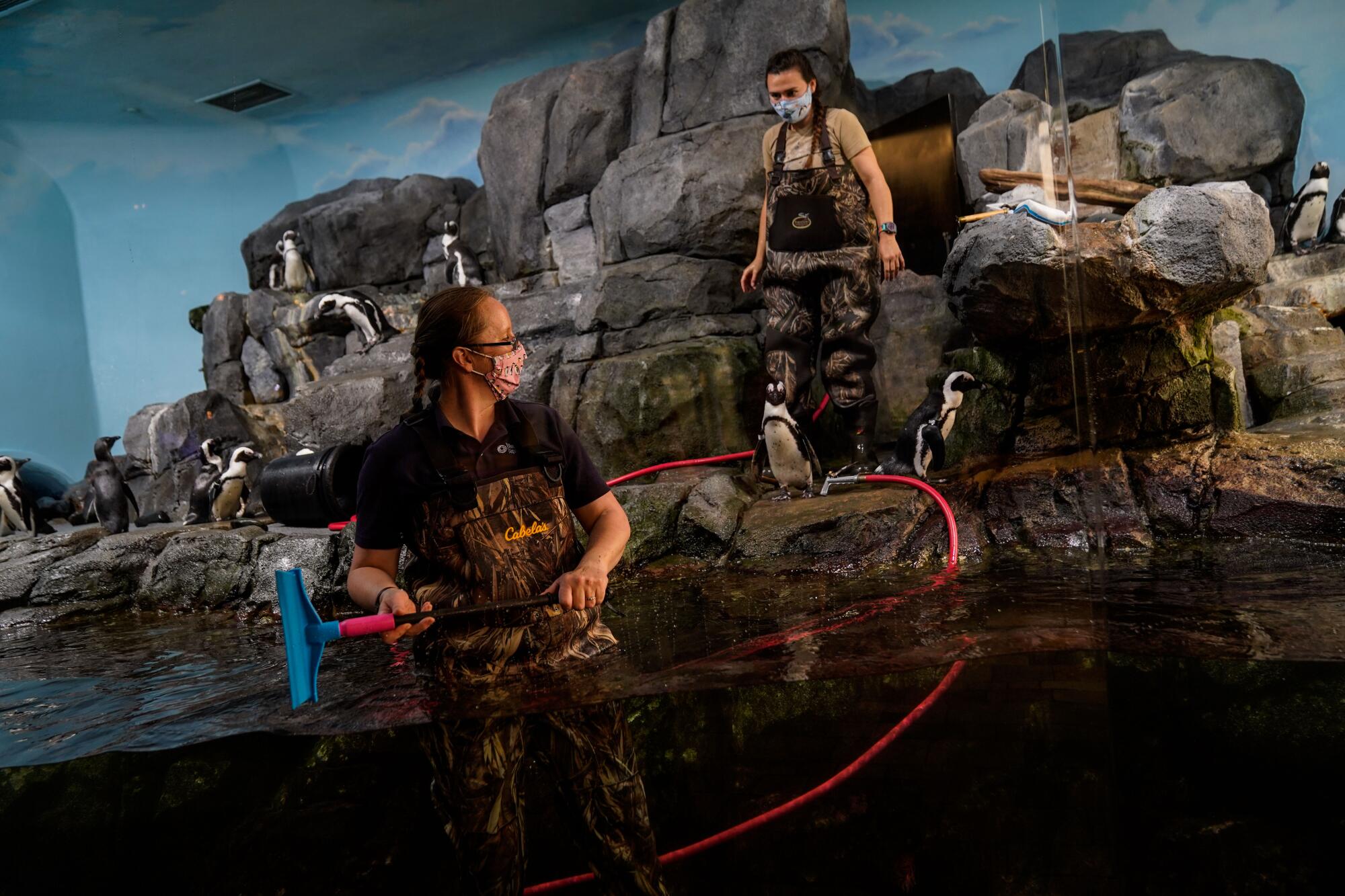
Zoos and aquariums — which rely upon ticket sales, concessions, parking, events and gift shops — have been hit especially hard during the shutdowns, said Dan Ashe, president of the Assn. of Zoos and Aquariums, an accrediting body that represents more than 200 facilities in the United States.
“The pandemic has just been, in a word, devastating,” Ashe said.
The group has been urging Congress to provide $30 million for zoos and aquariums in the next round of stimulus funding and to expand the eligibility for forgivable Paycheck Protection Program loans for larger nonprofits.
Virtually all of its members were shut down. Though about 86% have partly reopened, they are operating with heavily restricted capacity that is not sustainable in the long run, Ashe said.
The Los Angeles Zoo opened to the public Wednesday after a five-month closure in which it lost $11.7 million. The San Diego and Santa Barbara zoos and the Living Desert Zoo and Gardens in Palm Desert reopened in June.
After closing in March, the Aquarium of the Pacific in Long Beach opened in mid-June — at 25% capacity, with timed entry, guest temperature checks at the door and mask requirements. Its indoor facilities were open 19 days before being shut down again amid rising coronavirus cases in Los Angeles County. Its outdoor exhibits are open in a limited capacity.
That aquarium anticipates a $15-million shortfall out of a roughly $40-million operating budget, said chief financial officer Anthony Brown. It has laid off 82 of its roughly 400 staff members and furloughed about 100 people, he said.
It is having to get creative, including by relaunching its $150-per-person penguin encounter sessions for small groups and considering virtual yoga classes recorded in the aquarium.
“There’s no idea too small,” Brown said. “We’re really nimble, we’re able to do just about anything, but this is by far the biggest challenge this organization has had.”
The closure of the Monterey Bay Aquarium, which draws 2 million visitors a year, has been keenly felt on the Central Coast.

Tourism to Monterey County took a nosedive this year. Hotel occupancy rates are typically 80% or higher during the summer, O’Keefe said. In June, that rate was 48%. Travel has started to pick up, but slowly, the CEO said.
“It’s the ultimate double whammy, COVID plus the fires,” O’Keefe said. “We’re stuck with a quandary of, people can’t go inside and people can’t go outdoors.”
At the aquarium, they’re trying to keep morale up. There’s an ongoing staff dance competition, which includes a choreographed number by scuba divers in the Kelp Forest exhibit. They’ve also recorded “MeditOcean” videos, guided mindfulness meditations with footage of jellyfish and crashing waves.
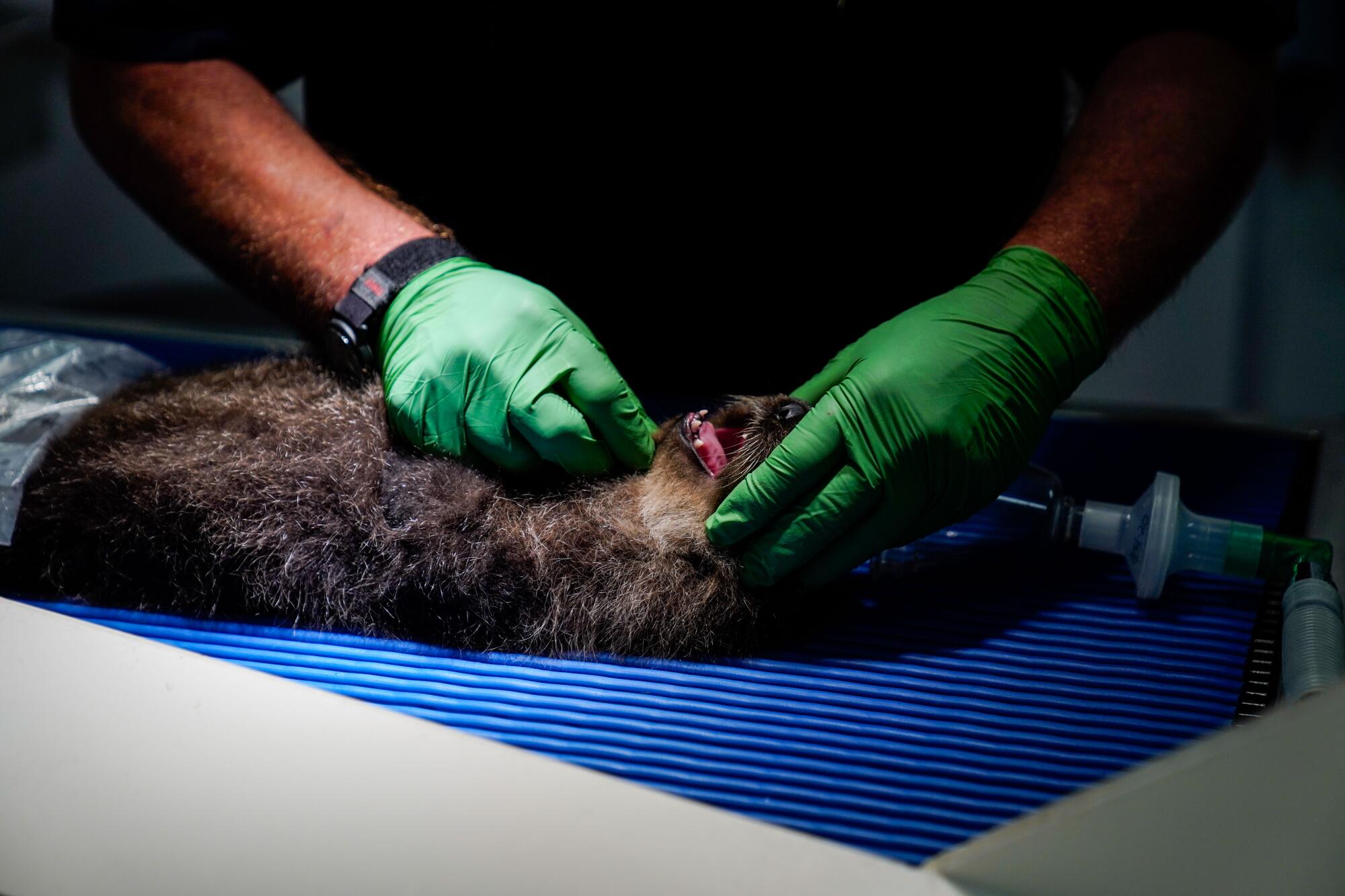
Swimming among the anchovies and rockfish in the Kelp Forest exhibit on a recent morning, a scuba diver answered questions from his audience about what it’s like to feed the denizens of the deep.
“Are there fish that prefer specific foods?” someone asked.
“Ohhh, yeah,” said Patrick Webster, his voice crackling on the underwater microphone. The giant sea bass is “always a little bit of a diva.” Sometimes, he explained, he tosses out a piece of shrimp and she gobbles it up and spits it out. Other times, he brings squid and she decides, “I’m more of a prawn girl today.”
The questions would usually come from a live audience perched in stadium seating by the three-story open-air tank. But the diver spoke instead to a dark, quiet room. Questions came from an online audience, watching via livestream.
Wearing an aquarium-branded mask with her own sketches of sunstars and algae, Packard said the facility is ready to go as soon as it’s allowed to reopen. It plans on instituting limited, timed entry and one-way paths. Each guest will have to wear a mask and confirm twice that they are showing no symptoms of COVID-19.
People are itching to come back, Packard said.
“What each of us needs right now, every day, is something to calm us down and uplift us with something positive and happy,” she said. “The beauty of nature here and enjoying something wonderful and curious with your family and loved ones — it’s just a reminder that as a human race we’ve done a lot to damage nature, and yet nature is going to endure.”
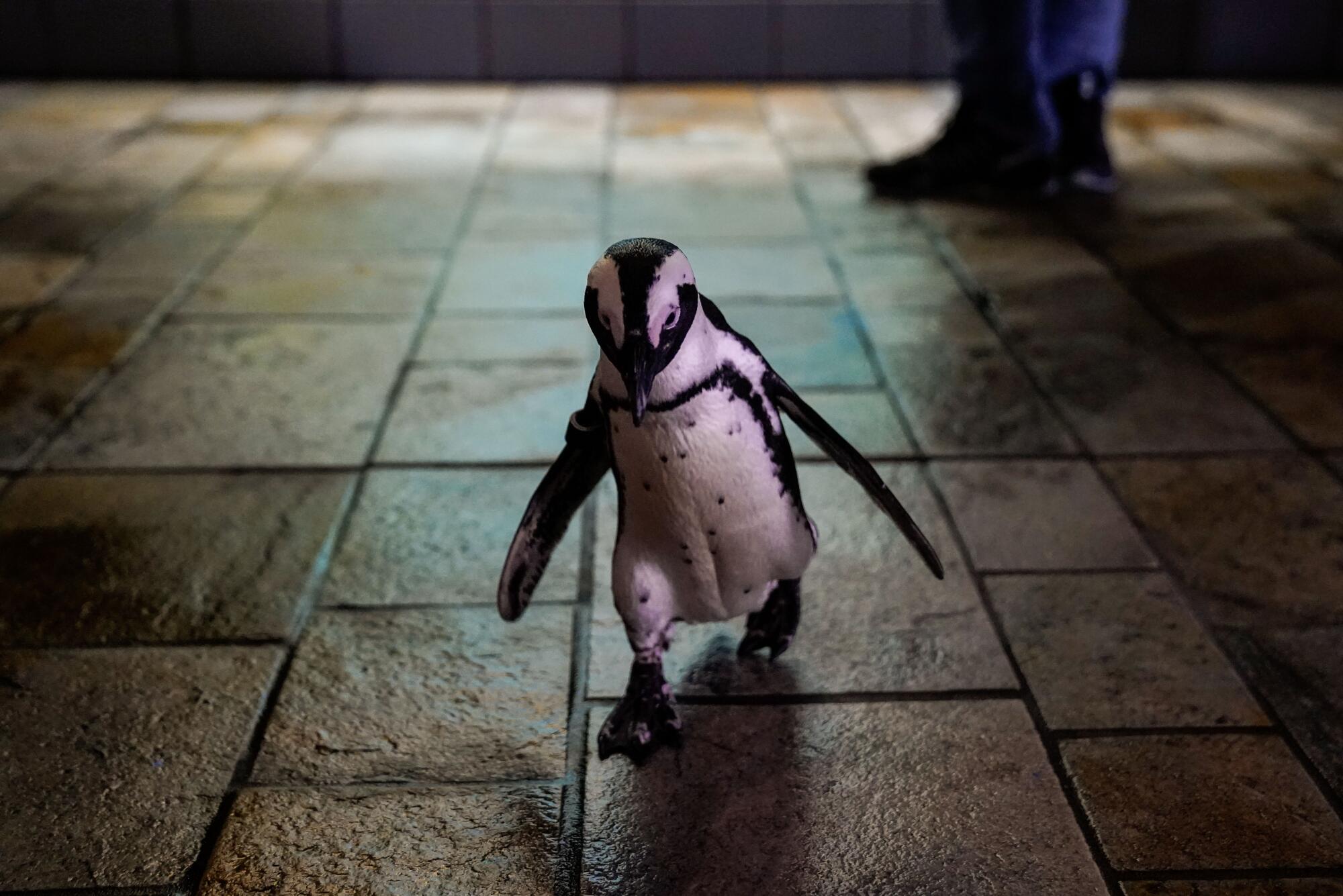
More to Read
Sign up for Essential California
The most important California stories and recommendations in your inbox every morning.
You may occasionally receive promotional content from the Los Angeles Times.

